INTRODUCTION:
For the last 20 years, the use of by products of various origins in the production of concrete has become an increasingly widespread practice in the world. The main advantages are all the elimination of scraps and a reduction in the over exploitation of quarries.
For the last 20 years, the use of by products of various origins in the production of concrete has become an increasingly widespread practice in the world. The main advantages are all the elimination of scraps and a reduction in the over exploitation of quarries.
Blast furnace slag is used in blended cement. Although many studies have been conducted on the evaluation of the electric arc furnace slag to be use in concrete as aggregates replacing natural aggregates, no studies have been performed regarding the use of induction furnace slag in concrete as aggregates replacing natural aggregates.
In making mild steel ingot scrap to sponge iron is fed into the induction furnace which produces large quantity of slag. For example Kotdwar a small town of Uttarakhand Steel Mills induction furnances alone generates 15,000 tonnes of slag per year and about 1,50,000 tonnes of slag is lying as dump around this city posing an environmental problem. If about 20 steel factories of Kotdwar generate such quantity of slag it can be calculated how much slag is being generated by about 600 induction furnace units of India.
The purpose of this study is to utilized this waste as useful building material, save the steel mills from transport and disposal problems. In place of river sand, alternate sand may be available to builders on cheaper rates. This will prevent over exploitation of quarries and save our environment.
The purpose of this study is to utilized this waste as useful building material, save the steel mills from transport and disposal problems. In place of river sand, alternate sand may be available to builders on cheaper rates. This will prevent over exploitation of quarries and save our environment.
The slag while making mild steel contains iron oxides, silica, alumina, Manganese oxide and Magnesium Oxide. Pollution Control Board of various state has considered slag while making mild steel in induction furnaces as hazardous. The emission from induction furnace include suspended particulate matter, oxides of sulphur, oxides of nitrogen, and CO2 emissions will be more during charging of material to furnace. It could be recommended that slag could be effectively utilized as aggregates in all concrete application. The consumption of slag which is waste generated by steel industry, in concrete not only helps in reducing green house gases but also help in making environmently friendly material.
ELECTRIC FURNACE
1. Electric Arc Furnace – The heat in the arc furnace is generated by an electric arc between two or more electrodes which are usually graphite or carbon between the electrodes and furnace charge or between two or more electrodes. When the scrap is melted down completely and melted slag has come over the top, the slag is tapped off completely by tilting the furnace. After removal of impurities from molten steel, it is run into the ladle from which it is poured into ingots or castings.
1. Electric Arc Furnace – The heat in the arc furnace is generated by an electric arc between two or more electrodes which are usually graphite or carbon between the electrodes and furnace charge or between two or more electrodes. When the scrap is melted down completely and melted slag has come over the top, the slag is tapped off completely by tilting the furnace. After removal of impurities from molten steel, it is run into the ladle from which it is poured into ingots or castings.
2. Induction Furnace – is an electric furnace in which metal is heated using induction. The heat needed to melt the raw materials is generated using electricity and its electromagnetic effect. The raw material which may range from scrap to sponge iron is fed into the furnace. The capacities of an induction furnace range from about a kg to a 100 tonnes but the popular capacity range is 1 – 5 tonnes.
All the factories of Kotdwar and near by towns using coreless induction furnaces. This kind of induction furnace has copper coils through which electricity is supplied to create the desired amount of heat. The coils are covered by a material that has a high melting point which is in turn covered by a pot of a heat resistant material. The raw material is fed into the pot and the heat from copper coils melts it. After melting the metal is poured into mould. The tilting type furnace is tilted on a one side hinge to pour the molten metal. The selection of a proper power rating for the furnace is very important for achieving the proper melting temperature. Specific power consumption norm in induction furnace is 620 kwh/tonne of liquid metal. The induction melting furnace industry is in operation in India for three decades.
SAMPLE COLLECTION
In making M.S. ingot steel scrap, sponge iron is melt in induction furnace. For producing four tones of product, five tones of raw material is fed in. About 200 kg of slag is generated in the production of one tonne iron. Samples of slag was collected from Uttarakhand Steel Mills waste slag. These mills grind the slag and recover iron content in it through magnetic separation. The slag contains about 10% of iron, upto 7% of iron is recovered by magnetic separation. Slag boulders are crushed in primary crusher, then it is crushed into finer crusher. Iron is recovered from the product of finer crusher by magnetic separator. The remaining material is discarded as waste. The sample is taken from this waste slag. Testing carried out from this sample as obtained without any crushing, sieving or any other treatment.
In making M.S. ingot steel scrap, sponge iron is melt in induction furnace. For producing four tones of product, five tones of raw material is fed in. About 200 kg of slag is generated in the production of one tonne iron. Samples of slag was collected from Uttarakhand Steel Mills waste slag. These mills grind the slag and recover iron content in it through magnetic separation. The slag contains about 10% of iron, upto 7% of iron is recovered by magnetic separation. Slag boulders are crushed in primary crusher, then it is crushed into finer crusher. Iron is recovered from the product of finer crusher by magnetic separator. The remaining material is discarded as waste. The sample is taken from this waste slag. Testing carried out from this sample as obtained without any crushing, sieving or any other treatment.
MATERIALS
1. Cement – OPC-53 grade was used in this study. The physical properties are given in Tables 1. The cement conforms to IS: 12269-1987.
1. Cement – OPC-53 grade was used in this study. The physical properties are given in Tables 1. The cement conforms to IS: 12269-1987.
2. River sand – Sand from local river used in this study. The test results are given in Table 2. The sand is of zone-II as per IS: 383-1970.
3. Slag sand – The sample used in the study as obtained from local steel mills, no crushing, sieving are any other process/treatment done in it. Its physical composition given in Tables 2.
The grading of slag sand found to be of Zone-II as per IS: 383-1970.
4. Aggregate – 20 mm graded crushed aggregate from local crushes was used in this study. The grading of aggregate found to be as per IS: 383-1970. The properties are given in Table 2.
5. Water – City supply potable tape water was used in making concrete.
MIX DESIGN
As per IS: 456-2000 and Ref. No. 8 mix design was carried out as per details given below.
1. Grade of concrete – M-40
2. Target mean design strength – 40 + 1.65 x 5 = 48.3 N/mm2 at 28 – day age
3. Slump – 100 + 10 mm at pour after one hour. Expected day temperature between 30 to 35oC.
4. Placing – The mix should be designed for pumped concrete.
5. Retarder superplasticizer conforming to IS: 9103-1999 based on Modified Sulphonate Naphthalane Condensate.
6. Materials – The physical properties of OPC is given in Table 1. The physical properties of river sand slag sand and 20 mm crushed aggregate are given in Table 2.
As per IS: 456-2000 and Ref. No. 8 mix design was carried out as per details given below.
1. Grade of concrete – M-40
2. Target mean design strength – 40 + 1.65 x 5 = 48.3 N/mm2 at 28 – day age
3. Slump – 100 + 10 mm at pour after one hour. Expected day temperature between 30 to 35oC.
4. Placing – The mix should be designed for pumped concrete.
5. Retarder superplasticizer conforming to IS: 9103-1999 based on Modified Sulphonate Naphthalane Condensate.
6. Materials – The physical properties of OPC is given in Table 1. The physical properties of river sand slag sand and 20 mm crushed aggregate are given in Table 2.
DISCUSSION OF TEST RESULTS
Concrete specimens were cast from the mixes as given in Table 3, covered with moist gunny bags for 24 hours, demoulded and immersed in water upto the specified testing age, cubes, beam and 24 hours water absorption tests have shown overall better performance of slag sand mixes than river sand mixes.
Concrete specimens were cast from the mixes as given in Table 3, covered with moist gunny bags for 24 hours, demoulded and immersed in water upto the specified testing age, cubes, beam and 24 hours water absorption tests have shown overall better performance of slag sand mixes than river sand mixes.
CONCLUSIONS
(1) In this limited study it is found that river sand can be replace fully with slag sand.
(2) The research scholar should take interest in its detail study particularly long term durability of concrete made with slag sand.
(3) The builder should use slag sand in their construction on trial basis.
(4) Huge quantity of induction furnace slag is dump and being generated daily, posing not only environmental but also transport and disposal problems.
(5) After detail study a official code should be published, so that those engage in construction should use it as replacement of natural sand without any hesitation.
(6) The management of steel mills should also take interest and cooperate in the utilization of slag as building material rather than discarding it as waste material of no use.
(7) To start with the builders of Kotdwar where huge quantity of slag is available on regular basis should use it in their construction on trial basis. They should know how cheap it will in comparison to river sand. Further the availability of good quality river sand is being diminishing day by day.
(8) Cubes, beam and 24 hours water absorption test have shown overall better performance of slag sand mixes than river sand mixes.
(1) In this limited study it is found that river sand can be replace fully with slag sand.
(2) The research scholar should take interest in its detail study particularly long term durability of concrete made with slag sand.
(3) The builder should use slag sand in their construction on trial basis.
(4) Huge quantity of induction furnace slag is dump and being generated daily, posing not only environmental but also transport and disposal problems.
(5) After detail study a official code should be published, so that those engage in construction should use it as replacement of natural sand without any hesitation.
(6) The management of steel mills should also take interest and cooperate in the utilization of slag as building material rather than discarding it as waste material of no use.
(7) To start with the builders of Kotdwar where huge quantity of slag is available on regular basis should use it in their construction on trial basis. They should know how cheap it will in comparison to river sand. Further the availability of good quality river sand is being diminishing day by day.
(8) Cubes, beam and 24 hours water absorption test have shown overall better performance of slag sand mixes than river sand mixes.
REFERENCES
1. IS: 383-1970, Specifications for coarse and fine aggregates from natural sources for concrete (second revision), BIS New Delhi.
2. IS: 456-2000, Plain and reinforced concrete – code of Practice (Fourth Revision), BIS, New Delhi.
3. IS: 516-1959, Method of test for strength of concrete, BIS New Delhi.
4. IS: 9103-1999, Specification for admixture for concrete (First revision), BIS, New Delhi.
5. IS: 12269-1987, Specification for 53 Grade ordinary Portland cement, BIS, New Delhi.
6. Centre for Science and Environment New Delhi – Environmental Assessment Jasodharpur Industrial Area, Kotdwar, Uttarkhand.
7. Rajasthan State Pollution Central Board – Guidelines for Abatement of Pollution in Steel Re-rolling Mills.
8. Kishore Kaushal – Mix Design for Pumped Concrete with, PPC, OPC, OPC + Flyash, NBM & CW, September 2010, pp. 204-216.
1. IS: 383-1970, Specifications for coarse and fine aggregates from natural sources for concrete (second revision), BIS New Delhi.
2. IS: 456-2000, Plain and reinforced concrete – code of Practice (Fourth Revision), BIS, New Delhi.
3. IS: 516-1959, Method of test for strength of concrete, BIS New Delhi.
4. IS: 9103-1999, Specification for admixture for concrete (First revision), BIS, New Delhi.
5. IS: 12269-1987, Specification for 53 Grade ordinary Portland cement, BIS, New Delhi.
6. Centre for Science and Environment New Delhi – Environmental Assessment Jasodharpur Industrial Area, Kotdwar, Uttarkhand.
7. Rajasthan State Pollution Central Board – Guidelines for Abatement of Pollution in Steel Re-rolling Mills.
8. Kishore Kaushal – Mix Design for Pumped Concrete with, PPC, OPC, OPC + Flyash, NBM & CW, September 2010, pp. 204-216.
Table 1 – Physical properties of OPC 53 Grade
Properties
|
Requirements as per IS: 12269-1987
|
| Fineness (m2/kg) = 294 |
225 minimum
|
| Soundness (mm) = 2.0 |
10 maximum
|
| Setting time (minutes) a) Initial = 122 b) Final = 193 |
30 minimum
600 maximum
|
| Compressive strength (N/mm2) a) 3 day = 35.5 b) 7 days = 43.3 c) 28 days = 58.9 |
27 minimum
37 minimum
53 minimum
|
| Specific gravity = 3.15 |
-
|
Table 2 – Physical properties of sand, slag and crushed aggregate
| I.S. sieve size |
Percentage passing by mass
| ||||
| River sand | Slag sand | 20 mm crushed aggregate | IS: 383-1970 Zone-II requirements of sand | IS: 383-1970 20 mm graded aggregate requirements | |
| 40 mm |
X
|
X
|
100
|
X
|
100
|
| 20 mm |
X
|
X
|
100
|
X
|
95 – 100
|
| 10 mm |
100
|
100
|
47
|
100
|
25 – 55
|
| 4.75 mm |
94
|
95
|
7
|
90 – 100
|
0 – 10
|
| 2.36 mm |
83
|
90
|
0
|
75 – 100
|
-
|
| 1.18 mm |
68
|
72
|
55 – 90
| ||
| 600 micron |
47
|
54
|
35 – 59
| ||
| 300 micron |
25
|
27
|
8 – 30
| ||
| 150 micron |
6
|
12
|
0 – 10
| ||
| Specific gravity |
2.65
|
2.90
|
2.65
|
-
|
-
|
| Water absorption % |
0.8
|
0.36
|
0.5
|
-
|
-
|
| Bulk density loose room dry kg/lit. |
1.64
|
1.71
|
1.39
|
-
|
-
|
Table 3 – M-40 Grade of concrete quantity of materials per cu.m. of concrete on the basis of saturated and surface dry river sand, slag sand and 20 mm aggregate
Sl. No.
|
Materials
|
I Mix
|
II Mix
|
| 1. | Water (kg/m3) |
160
|
160
|
| 2. | OPC (kg/m3) |
400
|
400
|
| 3. | River sand (kg/m3) |
740
|
-
|
| 4. | Slag sand (kg/m3) |
-
|
775
|
| 5. | 20 mm Agg. (kg/m3) |
1110
|
1160
|
| 6. | Retarder SP (kg/m3) |
4.0
|
4.5
|
| 7. | Slump after one hour (mm) |
95
|
105
|
| 8. | Volume of Air (%) |
1.4
|
1.5
|
| 9. | Cubes compressive strength (N/mm2) a) 7 day b) 28 day |
33.5
49.5
|
34.7
52.7
|
| 10. | Flexural strength 28 day (N/mm2) |
5.2
|
5.4
|
| 11. | Water absorption of 28 day matured cubes (%) |
4.8
|
4.2
|

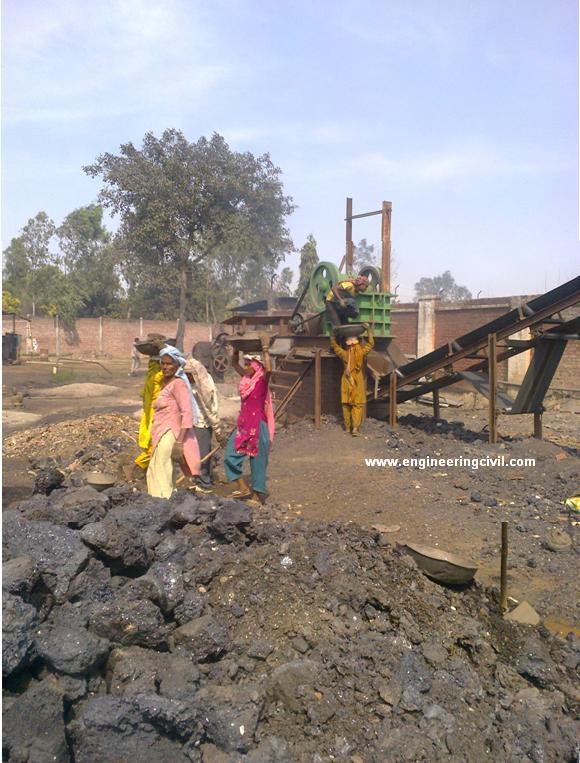
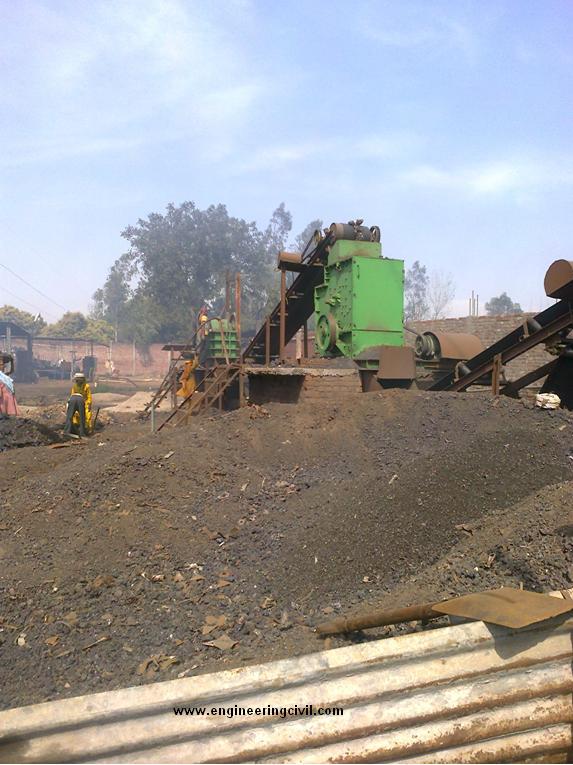
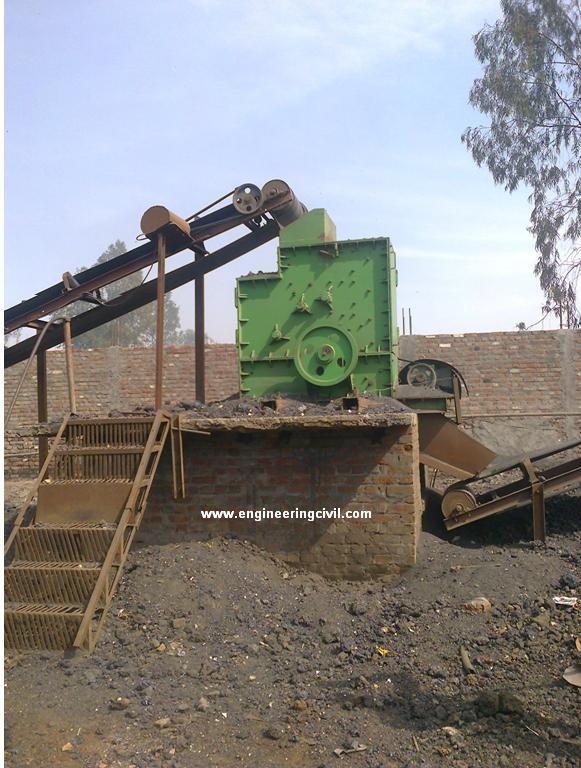
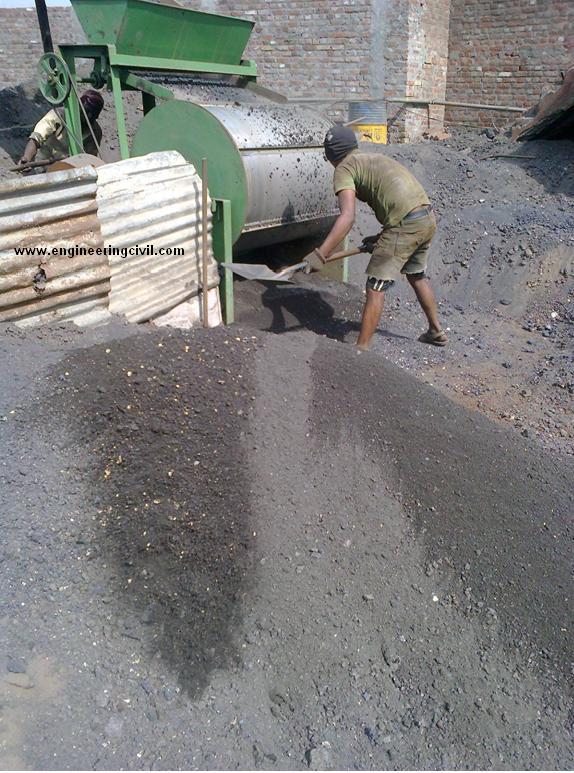
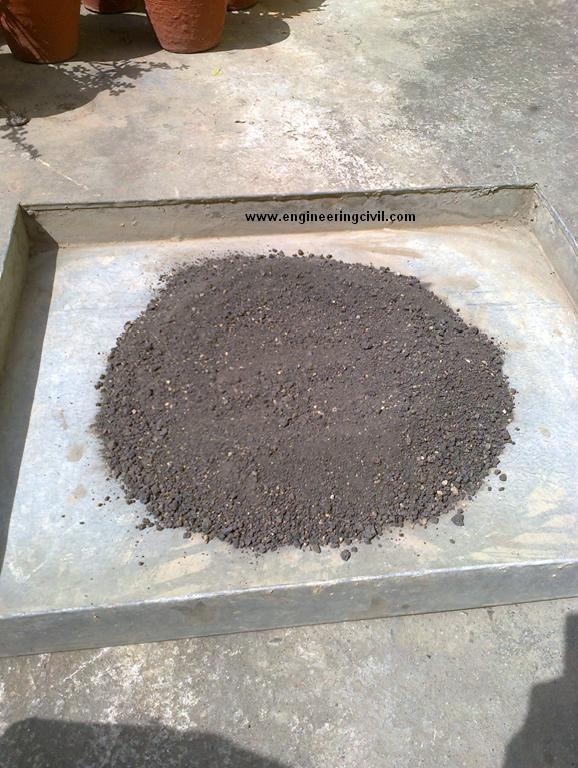
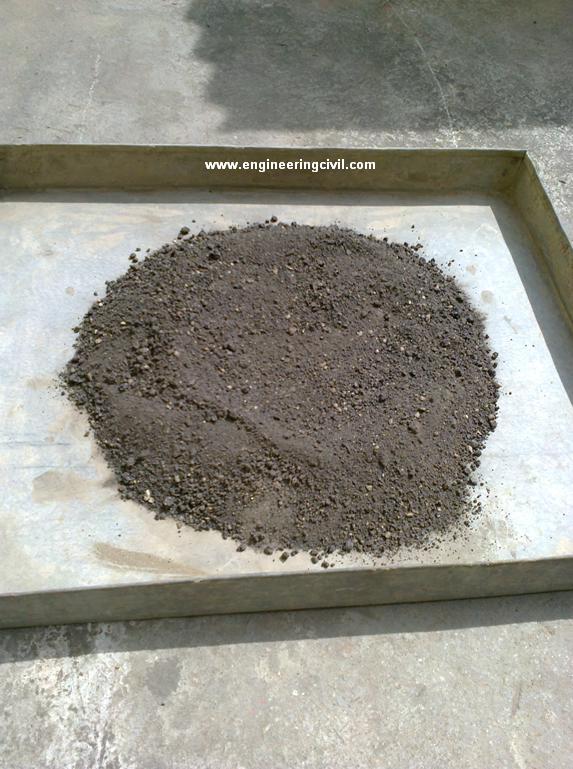
0 comments:
Post a Comment